A History of Peace and Partnership
Story by Laureen Lessard
Photography Courtesy Wayne State University Digital Collection
She’s a grand ole’ dame who stands in aquatic glory and a beacon to mariners and landlubbers for almost a hundred years. The Ambassador Bridge was built as a toll bridge and an international transportation link between Sandwich (Windsor), Ontario and Detroit, Michigan. Planes have flown under and over it, marriages have taken place at or on the international boundary, men have climbed to the top of the towers, dancers have danced across it, groups have walked across it, rumrunners used it during prohibition and protests have taken place on her and she has always been open 24/7, 365 days per year. Prior to the bridge, the only transportation between the Windsor and Detroit ports was by ferry.
The Ambassador Bridge was the first privately funded international bridge in North America. The cost of building The Ambassador Bridge was $23.5 million, a stark comparison to the $5.7 billion cost of the new Gordie Howe bridge targeted to open in 2024. On July 20, 1927, McClintic-Marshall Co., an Engineer & General Contractor, signed the contract to build the mammoth project. They were also the largest producer of steel at the time. The contract stipulated that construction was to be completed in 3 years. If construction was completed earlier, the firm would receive a bonus of half the revenues of the bridge until the original construction deadline. If it was not completed, the firm would pay the interest on the securities until the bridge was complete. It was completed nine months ahead of time.
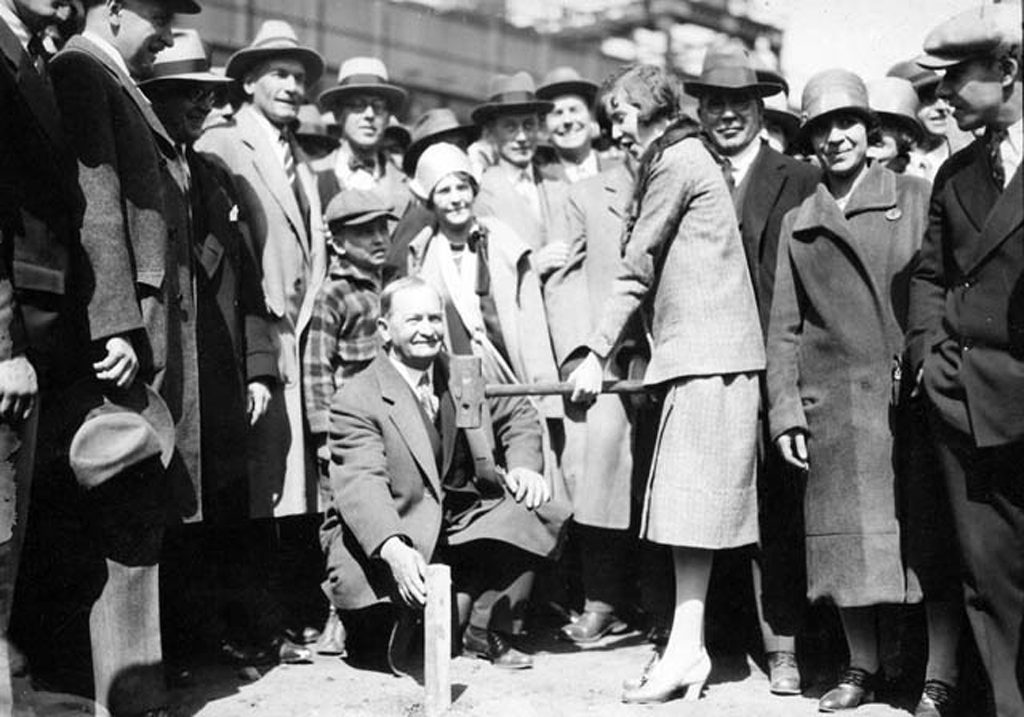
The number of workers employed on the bridge varied according to the stage of construction. At times, there were more than six hundred workers on both sides of the bridge. Wages were paid in American money, worth less than Canadian currency at the time causing some controversy. An average worker made $2.50 per day for an eight-hour shift. There were no fatalities during the construction,
It was originally named The Detroit Bridge but was later changed by financier Joseph A. Bower. A feasibility cost study was done by a group of businessmen headed by NY Civil Engineer, Charles Fowler in the early 1920’s. It was denied. Despite that, one of the men from the group, John Win Austin of the Detroit Graphite Company, persevered and with the suggestion of another member of the group, went to see a NY banker and investor by the name of Joseph A. Bower, who was a rising star in the J.P, Morgan Company, with a plan. Austin realized the importance of a bridge connection between the two cities while he also had an interest in getting the paint contract for his company.
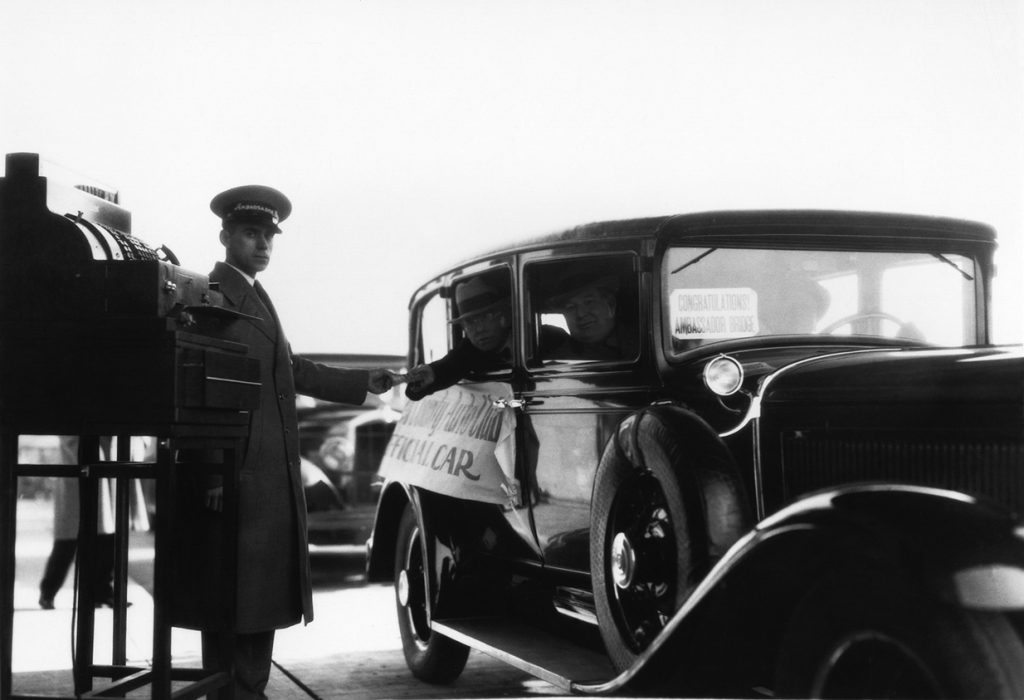
Bower liked the challenge and found investors for the project. There were indeed challenges including cable wire trouble. A new heat-treated wire was used for the cables instead of the universally cold drawn steel wire. The new revolutionary heat-treated wire cables had been tested and found to have much higher tensile strength than the traditional cold drawn steel wire. However, during construction inspections it was found that the bridge’s two main cable wires were faulty. Construction of the bridge was halted while the wires were removed and replaced, not an easy task. The wires were replaced with the traditional cold drawn steel wire at a cost of half a million dollars, absorbed by McClintic-Marshall. Extra workers had to be hired during the spinning of the new cables to complete the bridge by August 15, 1929.
There was a personal incident where an attempt to kidnap Bower granddaughter occurred by the deranged son of a NY lawyer. The man kidnapped the wrong girl by mistake and killed her along with a chauffeur. It is not certain if it had anything to do with the building of one of the most monumental projects in the country, but the story was hidden from the local press at the time. Construction began on May 7, 1927, and the bridge opened to the public on November 15, 1929. It was operated by The Canadian Transit Company (Canada) and The American Transit Company (Detroit) set up by Fowler in the early 1920’s. An opening day ceremony took place on November 11, 1929, where thousands attended. Besides bridge officials and their families in attendance were Governor Fred M. Green, Judge Sherman D. Callender & Honorable Charles McCrae. By January 1, 1930, 200,000 vehicles crossed the bridge and 1.6 million by the end of that year. Toll rates were 50 cents per car plus 5 cents per passenger, a motorcycle 25 cents, ambulance 50 cents, a bicycle 20 cents, a saddle, horse and rider 30 cents.
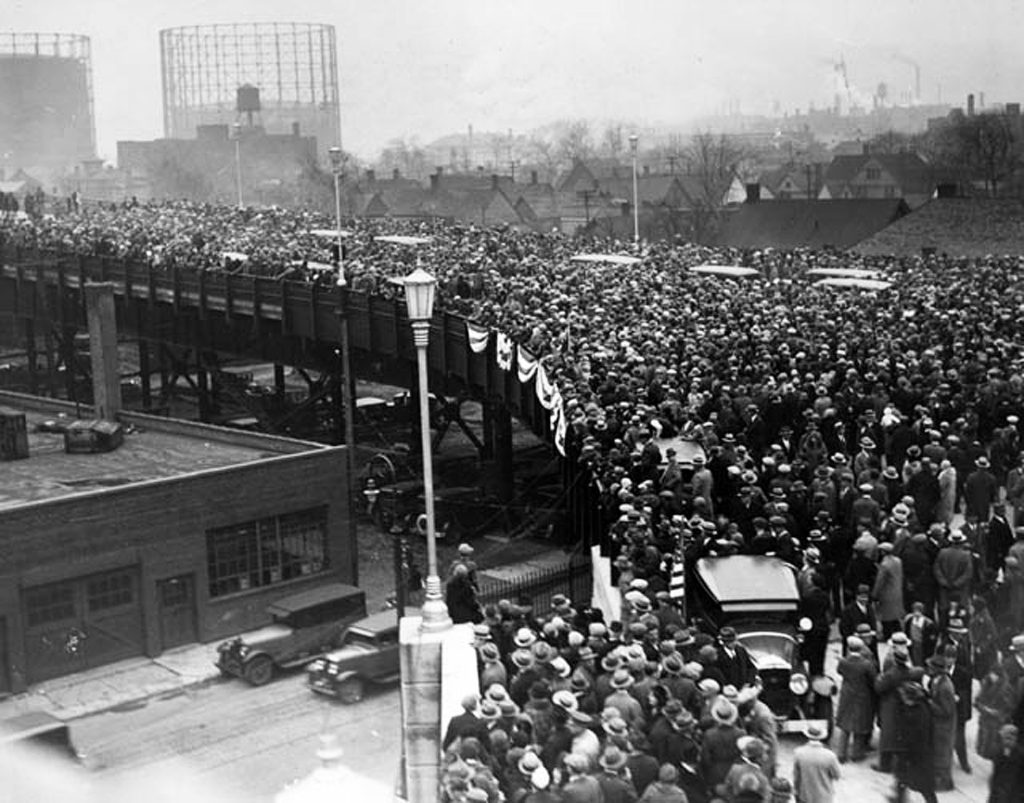
Joseph A. Bower’s family maintained the largest amount of ownership shares and control. The Depression brought financial woes with default on interest and mortgage bonds. Bower reorganized the bridge company in 1939, helping the company’s financial stability. There were more financial woes in WWII because of Canadian regulations on border crossing. It wasn’t until after the war that the bridge saw prosperity again.
Prosperity abounded afterward for John Win Austin. Although his original goal was to win the paint contract of the bridge, a sweeter deal came for the Detroit Graphite Company and the Dominion Paint Company of Windsor, Ontario when they merged with Valspar Paints in 1929. It is not clear of what role Austin played in the merger, but he had a very lucrative life after the completion of the deal and the opening operation of the bridge. Austin retired to Los Angeles, California in 1929 and became a member of the Los Angeles Country Club and served as a City Council member from 1941-53.
Joseph A. Bower continued his success in the J.P. Morgan Company and retired in Florida with his wife. Bower died on August 15, 1977, at the age of 96.
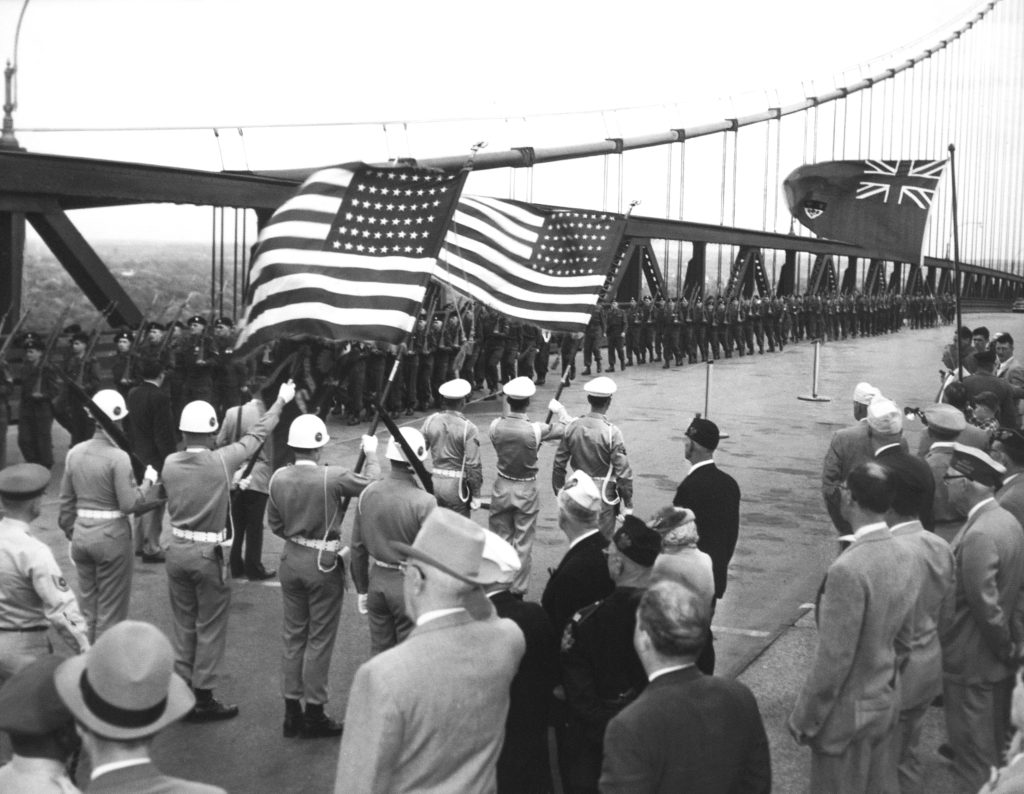
Today, The Ambassador Bridge is the busiest international border crossing in North America with daily average of 69,000 travelers and 8,000 commercial vehicles. In terms of trade volume over 150,000 jobs in Detroit and Windsor depend on the Border Transportation Partnership. The Detroit/Wayne County Port Authority list 1500 vessel trips with 17 million tons of cargo annually that pass under the bridge, not including private boats. The bridge is listed on the Windsor Municipal Heritage Register and on National Register of Historic Places in America as of 8/29/1980 making any plans for future demolition difficult.


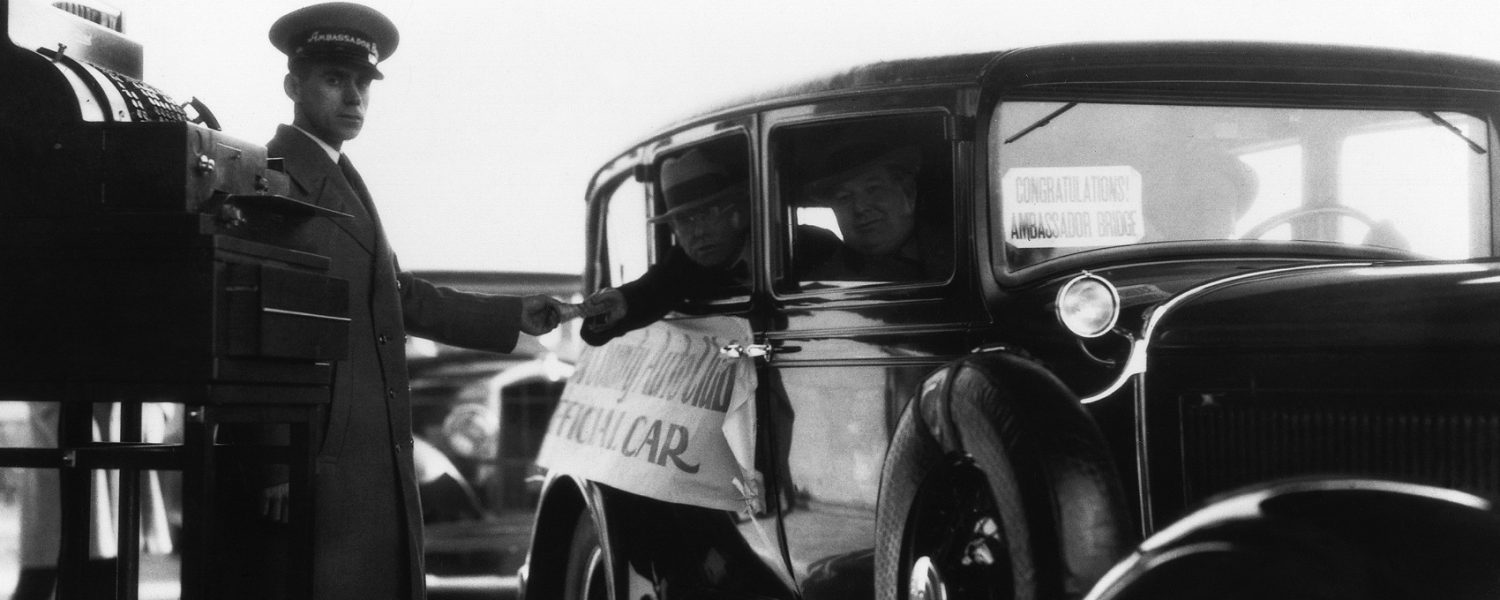

Add comment